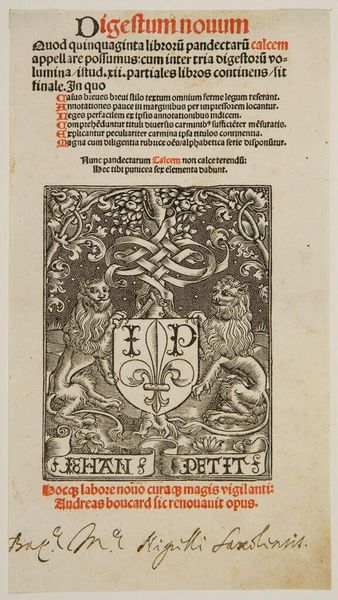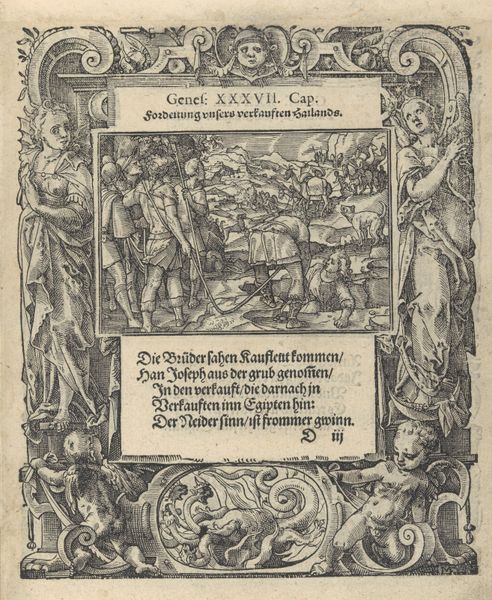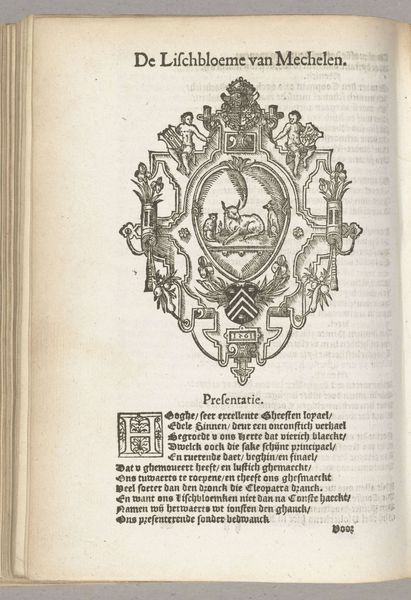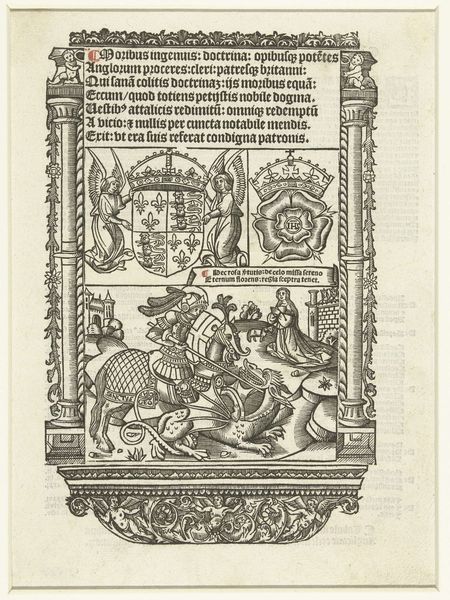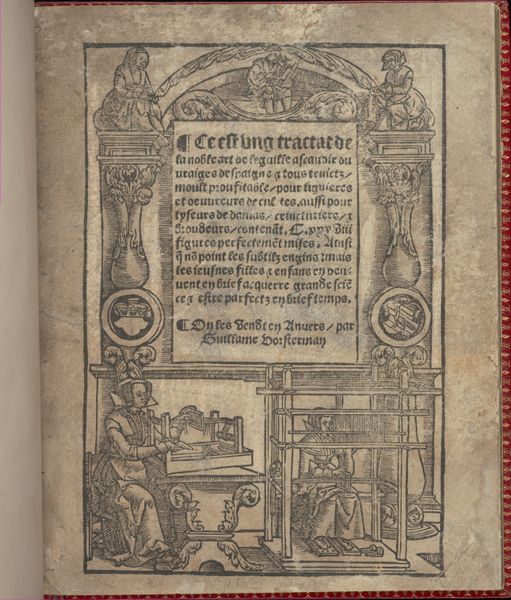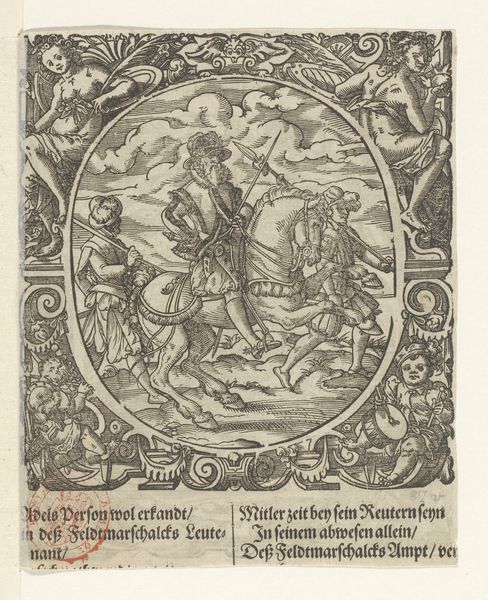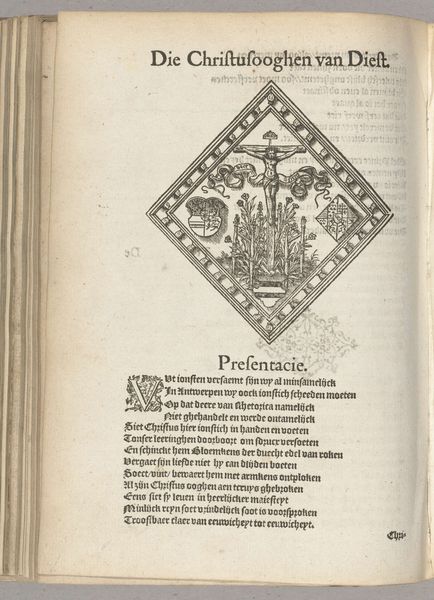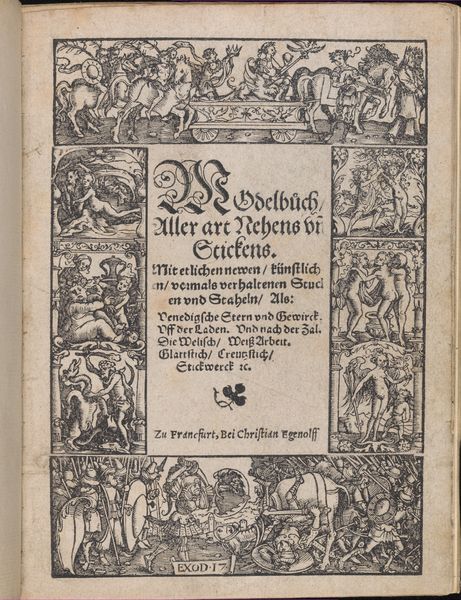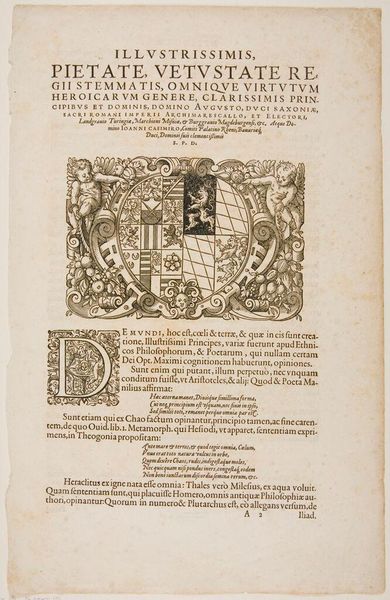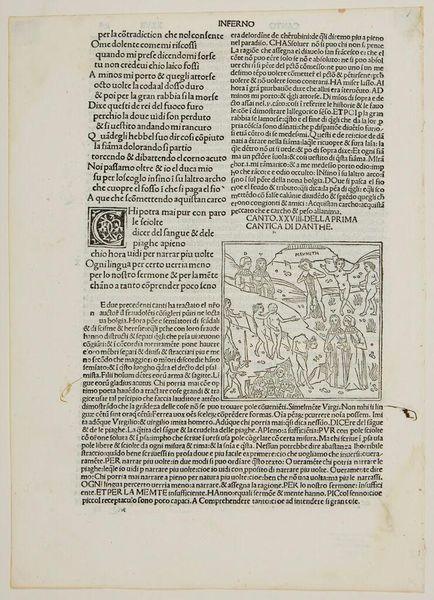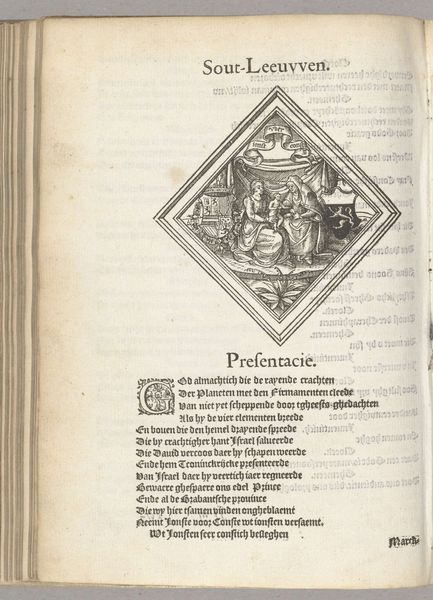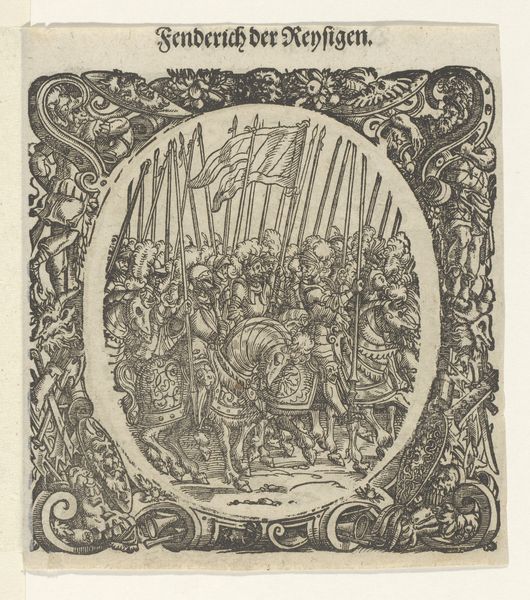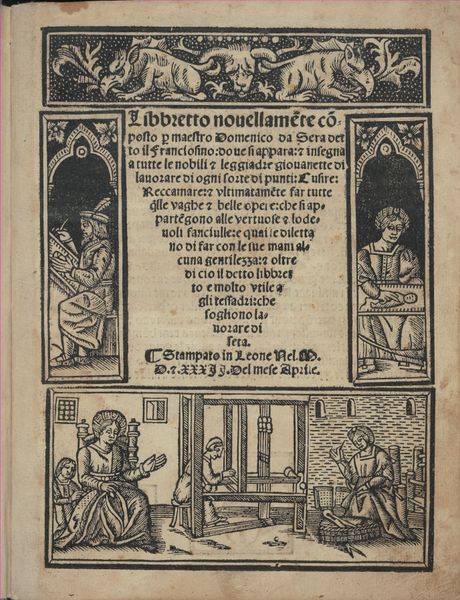
drawing, print, woodcut
#
drawing
#
medieval
# print
#
book
#
woodcut
#
northern-renaissance
Dimensions: 8vo (168 x 102 mm)
Copyright: Public Domain
Curator: The air around this image feels charged, somehow both reverent and unsettling. Editor: It’s a compelling woodcut! This is an opening from "Horae, B.M.V. use of Rome," printed by Thielman Kerver in 1504. These Books of Hours were extremely popular during that period, weren’t they? Curator: Indeed, they democratized devotion. Notice the unicorn motif? The unicorn traditionally embodies purity, grace, and even Christ himself. Yet, flanking the central crest like sentinels, there’s an assertiveness about them—almost guarding something. Editor: That crest you mention—with what looks like T.K. for Thielman Kerver— functions like a medieval advertisement, cementing the printer’s brand with this beautiful visual. What about the use of a dragon down at the bottom there? Curator: Ah, yes! The dragon often symbolizes chaos or evil. Its presence juxtaposed with the unicorns heightens the visual tension, creating a sort of symbolic battle. There's also a deeper historical perspective: images like this could affirm power, control perceptions of morality, or perhaps challenge dominant paradigms. Consider the implicit social roles assigned to those who possessed or commissioned it. Editor: Kerver obviously wanted to appeal to those who possessed the social power in France in that day. Curator: Yes, while embedding a powerful visual language within it. It's interesting to contemplate the personal relationship each reader might have formed with these powerful, enigmatic symbols. The printing press disseminated not just words, but emotionally resonant imagery. Editor: These kinds of printed book decorations had implications, as they played a role in consolidating the printing trade in particular locations like Paris and Lyon, by establishing production standards as they evolved alongside a wider dissemination of information. The details of this visual culture mattered deeply, affecting communities near and far! Curator: Absolutely, its symbolic choices had wide cultural implications that echo across centuries. We are fortunate to see such prints so that they can resonate still. Editor: Indeed. It's fascinating to consider how these detailed prints helped establish what was a sort of cultural branding at the dawn of printmaking, with lasting consequences on culture.
Comments
No comments
Be the first to comment and join the conversation on the ultimate creative platform.
